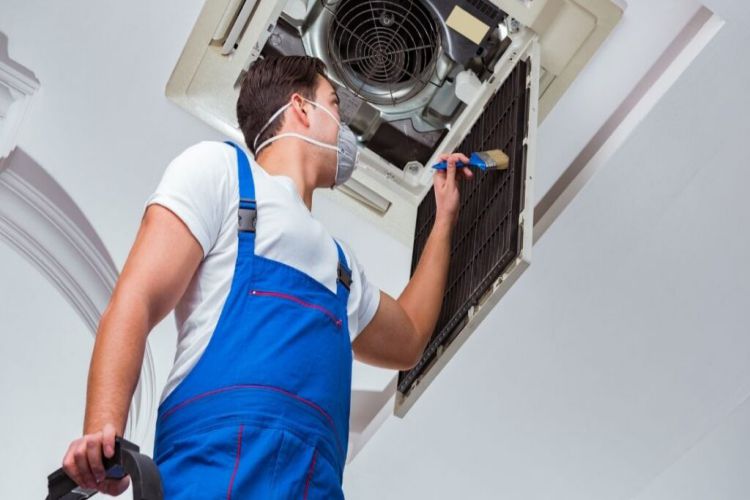Installing a new HVAC system is one of the most significant upgrades you can make to your home’s comfort and efficiency. A proper installation ensures not only reliable performance but also helps control energy bills and extend system lifespan. For many homeowners, the process can feel overwhelming, especially if it’s their first time undergoing a complete replacement or upgrade. Knowing what to expect from the start helps reduce stress and ensures everything runs smoothly. From the initial assessment to the final inspection, understanding each phase makes it easier to prepare for a comfortable and seamless experience.
A Smooth Start with Pre-Installation Planning
Before any physical work begins, the installation process starts with detailed planning and system evaluation. Contractors conduct a home assessment to determine the correct HVAC size and layout, taking into account factors such as square footage, insulation, and duct condition. This step ensures that the system operates efficiently, neither overworking nor underperforming. During this stage, technicians may also discuss preferences regarding energy efficiency, smart thermostats, or air quality enhancements. Clear communication during planning helps align the homeowner’s expectations with the project’s requirements. Once equipment selection is finalized, scheduling is arranged to minimize disruption. Pre-installation preparation often includes clearing access areas and reviewing safety protocols. This thoughtful approach lays the groundwork for a successful installation, ensuring every component fits both your home’s structure and your comfort needs.
Removal of the Old System
The following primary phase involves removing the existing HVAC system. This step is handled with care to avoid unnecessary damage or mess. Technicians first disconnect the power supply and safely remove refrigerant following environmental guidelines. Old ducts, wiring, and mounting hardware are carefully taken out if they are being replaced or upgraded. This stage can reveal hidden issues, such as leaks, corrosion, or insufficient insulation, which need to be addressed before the new system is installed. For homeowners seeking HVAC service in Phoenix, this phase is crucial due to the region’s intense heat, where even minor inefficiencies can significantly impact comfort and performance. Removing the old unit also provides a valuable opportunity to inspect airflow design, ensuring that the new system will function with maximum effectiveness once it’s in place.
Preparing the Installation Site
After the old unit has been cleared, the installation area is prepared for the new system. Technicians clean and inspect the area, confirming that the surface and connections meet safety and efficiency standards. If ductwork needs modification or sealing, this is done now to prevent energy loss. Proper insulation is verified, and any adjustments to electrical wiring or drainage lines are completed to ensure compatibility. This preparation phase is crucial for establishing a stable foundation that allows the HVAC unit to operate smoothly. A well-prepared site minimizes future issues such as vibration, noise, or moisture buildup. Homeowners can expect the crew to work methodically, keeping the workspace organized and maintaining respect for the property. Once everything is ready, the stage is set for the central installation to begin, marking the transition from preparation to transformation.
Installing the New System
The core stage of the process involves setting up the new HVAC system. Technicians position the indoor and outdoor units, ensuring correct alignment and secure mounting. Electrical connections, refrigerant lines, and ductwork interfaces are carefully attached according to manufacturer guidelines. The precision of this step determines how well the system performs in the long run. Once physical installation is complete, the system is vacuum-sealed to remove air and moisture before refrigerant is added. This step ensures that internal components remain uncontaminated and efficient. The thermostat is then wired and configured to communicate effectively with the system. Each action is tested for accuracy, ensuring that airflow, voltage, and pressure align perfectly. Proper installation not only guarantees performance but also prevents common issues such as leaks, uneven cooling, or reduced air quality.
Testing and Calibration
Once installation is complete, technicians conduct a series of tests to verify performance and safety. The system is turned on, and airflow measurements are taken to confirm balance throughout the home. Thermostat settings are calibrated to ensure accurate temperature control, and refrigerant levels are regularly inspected to maintain optimal efficiency. During this stage, technicians check for any abnormal noises or vibrations that might indicate improper alignment. The purpose of this process is to confirm that every component—from the compressor to the ducts—is functioning harmoniously. Calibration helps the HVAC system deliver consistent comfort while operating at peak energy efficiency. This thorough testing phase provides homeowners with peace of mind, ensuring their investment has been correctly installed and is ready for long-term performance.
Homeowner Orientation and Final Review
After testing and calibration, the final step involves reviewing system operation with the homeowner. Technicians guide users through key features, explaining how to use the thermostat, adjust settings, and monitor its performance. Maintenance guidelines are discussed, including the frequency of filter replacement and signs that indicate when service may be required. This personalized orientation ensures that homeowners understand how to maintain comfort efficiently throughout the year. Any warranty information or documentation is provided at this time, along with contact details for future support. The final review is an opportunity to address any last questions before technicians leave the site. It marks the completion of the installation process and the beginning of a more efficient, comfortable living environment.
Post-Installation Maintenance Considerations
A new HVAC system performs best when supported by consistent maintenance. After installation, scheduling regular inspections ensures that filters remain clean, airflow stays balanced, and mechanical parts function properly. Many contractors offer service plans that include seasonal checkups, helping identify issues early before they lead to significant repairs. This preventive care keeps energy bills low and prolongs the system’s lifespan. For homeowners, maintaining a good relationship with their installation team provides long-term reliability and access to professional support whenever adjustments are needed. Proper upkeep also preserves manufacturer warranties, which depend on documented maintenance. Treating the new system as an ongoing investment ensures continued comfort and performance for many years to come.
Understanding what to expect during an HVAC system installation transforms the process from intimidating to manageable. From the initial assessment to post-installation maintenance, each step contributes to the system’s efficiency, reliability, and longevity. A well-planned and professionally executed installation provides consistent comfort, improved air quality, and lower energy costs. By staying informed and involved, homeowners can ensure the process runs smoothly and results in a perfectly tuned system suited to their home’s needs. Ultimately, the installation marks not just the start of improved indoor comfort but also the foundation of long-term energy savings and dependable performance.

